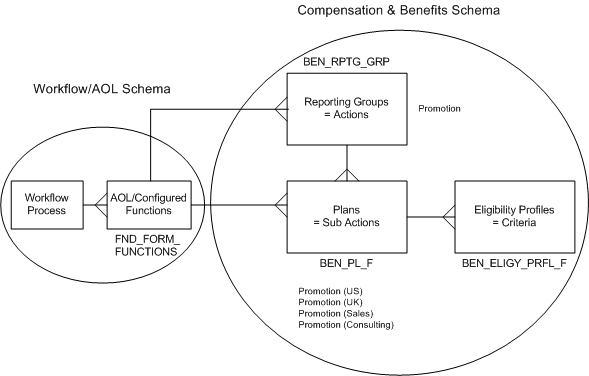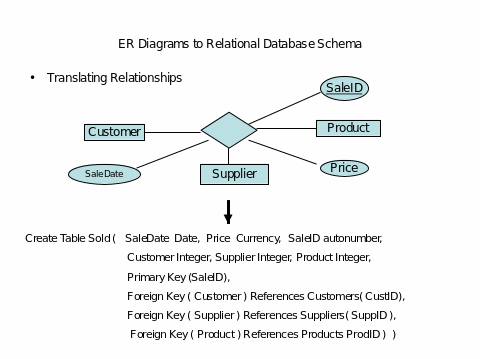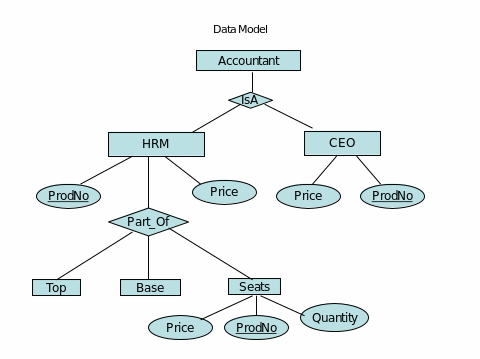According to Bagui and Earp (2011, p.34), the employee self-service system is a concept that was developed especially for software developers, which provides employees access to their personal information without human intervention. Bagui and Earp (2011, p.34) shows that the employee self-service system is a web based application with an interactive graphical user interface, which enables the user to manage their own information electronically. Here, in addition, the system enables users to manage and get access to the information about team members, training needs, employee requests, and to enter their qualifications and professional and academic qualifications. The employee self-service system enables employees with the right to manage their personal information such as payroll and personnel information. Once a user is given access to their personal details, employees can easily change their contact addresses, family status, and can gain access to their benefits without human intervention (Ding, Hu, Verma & Wardell 2010). Here, employees can use the system to ask for leave and provides them with the opportunity to automate personal details and be able to view their work history.
Typically, the flow is shown in the diagram below. According to the diagram, it is possible for the flow of data in the employee self-service system to be presented as shown. In addition, it is possible to see the workflow order and the relationship between different tasks that are done by the organisational employees.

The application provides an interactive graphical user interface, which employees can use to interact with the system to retrieve and view personal information. Employee self-service (web-based application) provides organisations with the ability to project teams and be able to interact with project team members (Meuter, Ostrom, Roundtree & Bitner 2000) A typical example is the accountant who needs to work to keep employee records updated and to keep the books of account of the company. Using the Employee self-service (web-based application) could provide the management, CEO, administration, permanent and temporary employees with the ability to update their records and the accountant to keep the financial records. It makes it easy for new applicants to send their resumes online and to make any relevant data verifications.
Advantages
A study by Riordan (2005., p. 34) shows that the employee self-service (web-based application) provides organisation with the ability to empower employees to do their tasks without human intervention, which translates to improved project progress, reduced costs, reduced errors, higher levels of transparency, improved productivity, and improved accountability. In his study, Riordan (2005, p. 34) was able to show that the application enables the manager, the human resource department, the accountant, and the business owner who is responsible for hiring staff (who include students, mums, and retirees) to work on part time basis and permanent basis (Riordan 2005). Here, Riordan (2005. p. 34) argues that the quality of data, which is used in the project, can be guaranteed because employees have the sole responsibility of collecting the data and ensuring that the data is of good quality.
Typically, the system enables employees to gather information about a project and any other information that can be used to effectively execute the project and process transactions without any human intervention, it lowers the cost of doing business in the organisation. The case study shows the challenges the organisation and the management are going through and the need for a system, which could offer support to the employees to do their duties effectively (Riordan 2005). Integrating the Employee self-service (web-based application) into the running of the business involving permanent or part time employees will provide the management with the ability to handle the staffing problems effectively (Ding, Hu, Verma & Wardell 2010).
Ding, Hu, Verma and Wardell (2010, p.34) agree in their findings that data entry costs could be reduced significantly because many of the changes needed for an employee to do certain transactions can be entered by the employees themselves without the intervention of the other people (Ding, Hu, Verma & Wardell 2010). Here, the service requests by customers and employee could be drastically reduced. In addition, the costs in terms of human resources and management activities could be reduced drastically by implementing the Employee Self-Service system. In addition, the strategy provides additional benefits to the employee and to the organisation and provides standardised platform for doing work.
Disadvantages
The disadvantages of the system include lack of personal contact with other people. The system cannot provide the user with the required instructions on how to do certain activities and is vulnerable to abuse by disgruntled employees.
The entity definition matrix
The entities in the system include the accountant who was hired to set up the company and provide the Right-on-the-Money services. In addition, other proprietor recruited additional staff to provide additional services, which included 3 people. The three people were recruited to do various support services to ensure the company staffs were sufficient. Part time employees include mums, students, and retirees for part time and short time work, depending on seasonal requirements, who could help for the packaging and shipping orders. In addition, an administrator was hired to look into legal HR, payroll and tax. A team of permanent employee coordinate and collect relevant employee data, keep record of employee data, and pass the data to the accountant. The data can only be passed to the accountant when one of the owners has signed it.
Here, to ensure operational efficiency of the project based web based system is successful, a human resource manager was responsible for tracking the project progress costs using a spreadsheet-based timesheet process. The CEO is another permanent employee who has to sign the information presented by the HRM department each month before the information is presented to the accountant. The HRM is directly connected with the accountant and the CEO because of the activities involved (Riordan 2005).
Assumptions: Employees have only one qualification and the qualification can only be of one type.
Business Rules
According to Riordan (2005), all employees are under the HRM department because it is responsible for hiring the employees who include the CEO, the permanent and part time employees, and the students. Ding, Hu, Verma and Wardell (2010, p.34) shows that in such a system, the accounts department has one employee who has many qualifications because the time sheet for the accountant shows that they can keep books, records, and other activities necessary for effective project progress , management, and execution (Ding, Hu, Verma & Wardell, 2010). The timesheet for the tasks done by each entity is shown below.
- Accountant (set up company, keeps books, does the recording, keeps records, cross examines records, and accepts records).
- Permanent staff (Collects data, keeps records, packaging, fulfills shipping orders, passes records to accountant).
- Administration (Human resource, Payroll preparations, taxes)
- Owner (Tracks temporary staff, tracks permanent staff, tracks costs, payment costs).
- CEO (Reviews processing data, passes data to accountant once a month).
- Temporary staff (provides packaging, shipping orders).
- Permanent staff (is responsible for packaging, shipping orders).
An argument by Ding, Hu, Verma and Wardell (2010, p.56) shows that different employees can do different tasks at the same tome and one employee can do one task at a time. In addition, a task, such as data collection, reviewing, and certifying it to be correct can be done by different employees at a time. Here, the accountant can verify that the data, which has been collected by the CEO, can be verified to be correct. Here, a relationship between the accountant and the CEO exist on the level of data verification and it is a one to one relationship. A person can do one or more project activities.
Intermediate data model
The intermediate “data model precedes the actual data model and shows the relationships between the entities in the system and the factors for each entity in the relationship” (Bagui & Earp, 2011). The entities discovered in the scenario include the owner and the qualifying factors for the owner include business ownership, the name of the owner and the personal attributes. The personal attributes include the name, occupation, data of birth, and the time based activities of supervising the temporary employees to record the time they take to do their tasks and the cost of the activities they do. The other entity is the administration, which is the department concerned with project administrative activities such as recruiting and staffing both the permanent employees and the temporary employees. The accountant is under the administration department because they are concerned with the recoding all financial transactions, which take place within the organisation.

Assumptions: No employee works in different departments at the same time, employees have one address, and one qualification.
Analysis of the scenario
The business owner starts the business, and the attributes which define the business owner include the name, occupation, date of birth, address, phone number, project start date, position. The business owner hires the accountant, whose attributes include EmployeeID, EmployeeName, Salary, StartDate, EndDate, and Tasks. The accountant receives data from the CEO, the permanent staff, the business owner, and the administration. The owner works with permanent and temporary staff. Temporary staff works with the business owner who makes tracks down their activities and records them against the time they take to do the tasks. The temporary staff is defined by EmployeeID, EmployeeName, Salary, StartDate, EndDate, and Status. In addition, there are temporary staffs whose attributes are similar to those of the permanent employees except their status is temporal.
The CEO is directly responsible for reviewing data about permanent and temporary staff once a month and provides the accountant with the data. The relationship between the CEO and the accountant is a one to one relationship. The business owner and the permanent and temporary staff form a one-to-many relationship (Connolly & Begg 2005). The administration had a one-to-many relationship with the permanent and temporary employees and a one-to-one relationship with the accountant and the CEO. The accountant and the CEO have a one-to-one relationship and the CEO is defined by the following attributes EmployeeID, EmployeeName, Salary, StartDate, EndDate, and Tasks. The administration is defined by the details, which are similar to those of other employees except for the tasks doed by the employees. The administrator is defined by EmployeeID, EmployeeName, Salary, StartDate, EndDate, and Tasks.
The data model
The complete data model consists of the entities in the system and shows how each entity interacts with the other, the primary and secondary keys and normalised data. The data model is defined by employee attributes. The assumption at this point is that the owner is an employee because he tracks the time part time employee take to do their activities and the cost of each activity. Another assumption is that all part time employee and permanent employees are under the umbrella of employees and their attributes are defined as employees. In the data model, the entities include: Employee, Employee Qualifications, Department, and Qualification type and the description is detailed below. Assumptions: The main assumptions are that no person can have more than one primary key and a person or an employee can have one foreign key.

The above data model shows how the accountant relates with other group member in the new organisation. The HRM is shown and the relationship between the HR and the accountant clearly shown here.
References
Bagui, S & Earp, R. 2011, Database design using entity-relationship diagrams, CRC Press, New York.
Connolly, TM & Begg, CE 2005, Database systems: a practical approach to design, implementation, and management. Pearson Education, New York.
Ding, DX. Hu, PJH, Verma, R & Wardell, DG 2010, ‘The impact of service system design and flow experience on customer satisfaction in online financial services’, Journal of Service Research, vol. 13, no., 1, pp. 96-110.
Meuter, ML, Ostrom, AL, Roundtree, RI & Bitner, MJ 2000, ‘Self-service technologies: understanding customer satisfaction with technology-based service encounters’, Journal of marketing, vol. 64, no.,3, pp. 50-64.
Riordan, RM 2005, Designing effective database systems. Addison-Wesley Professional, New York.